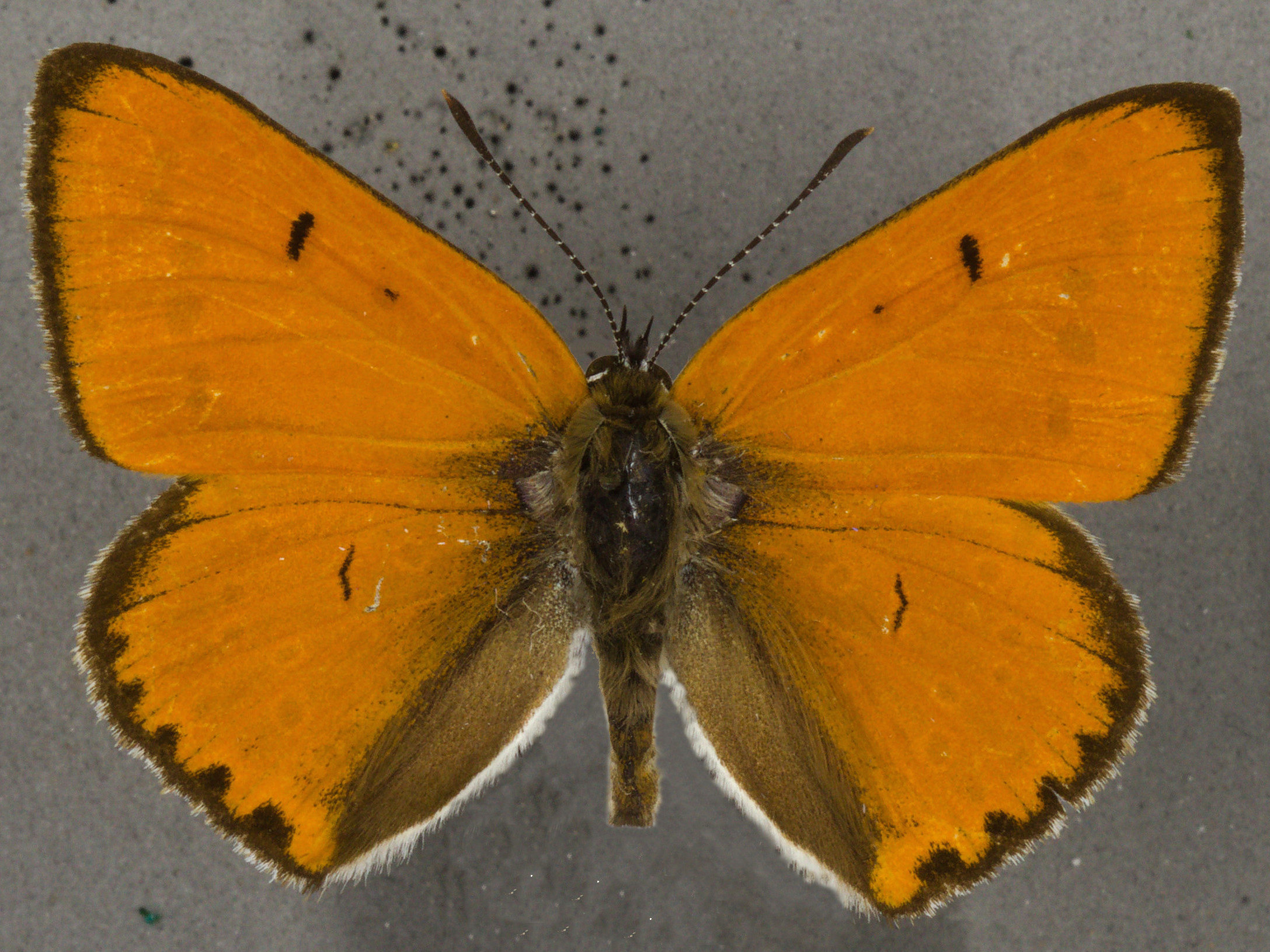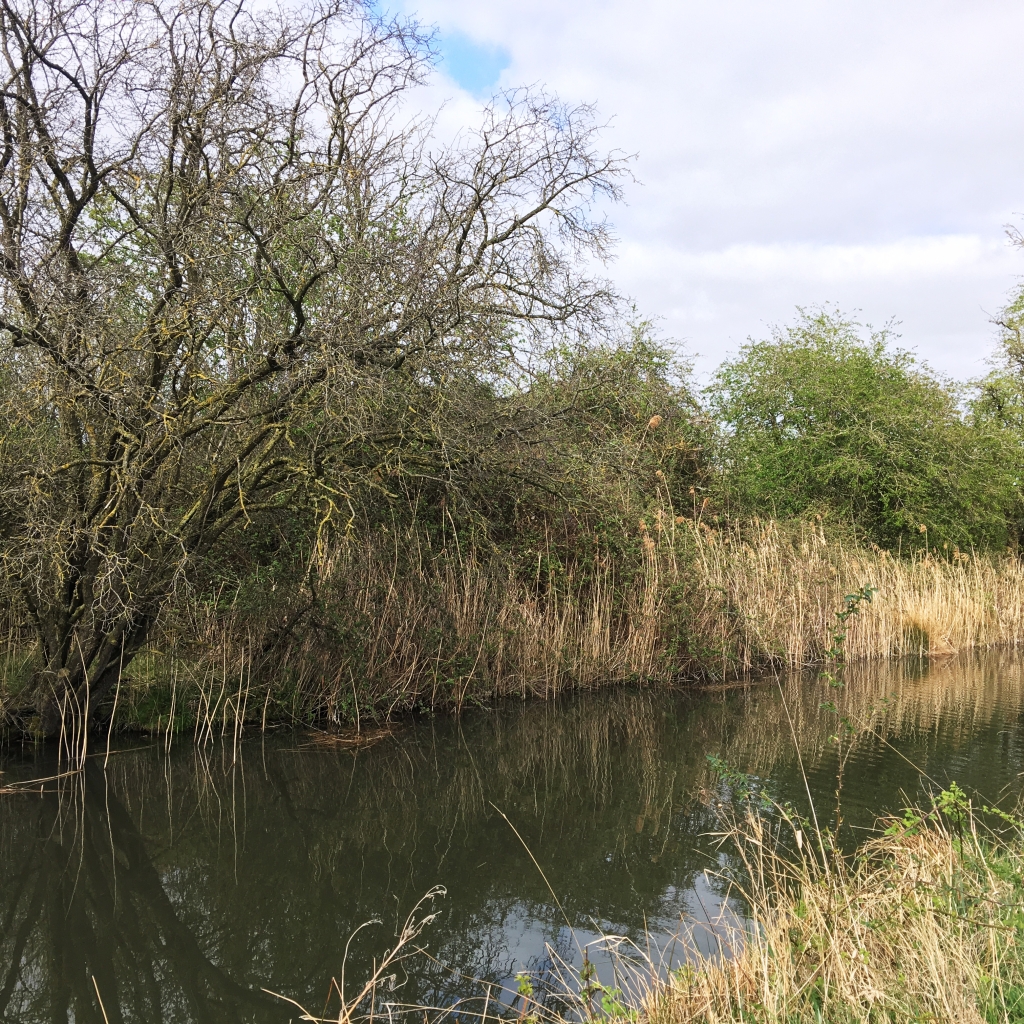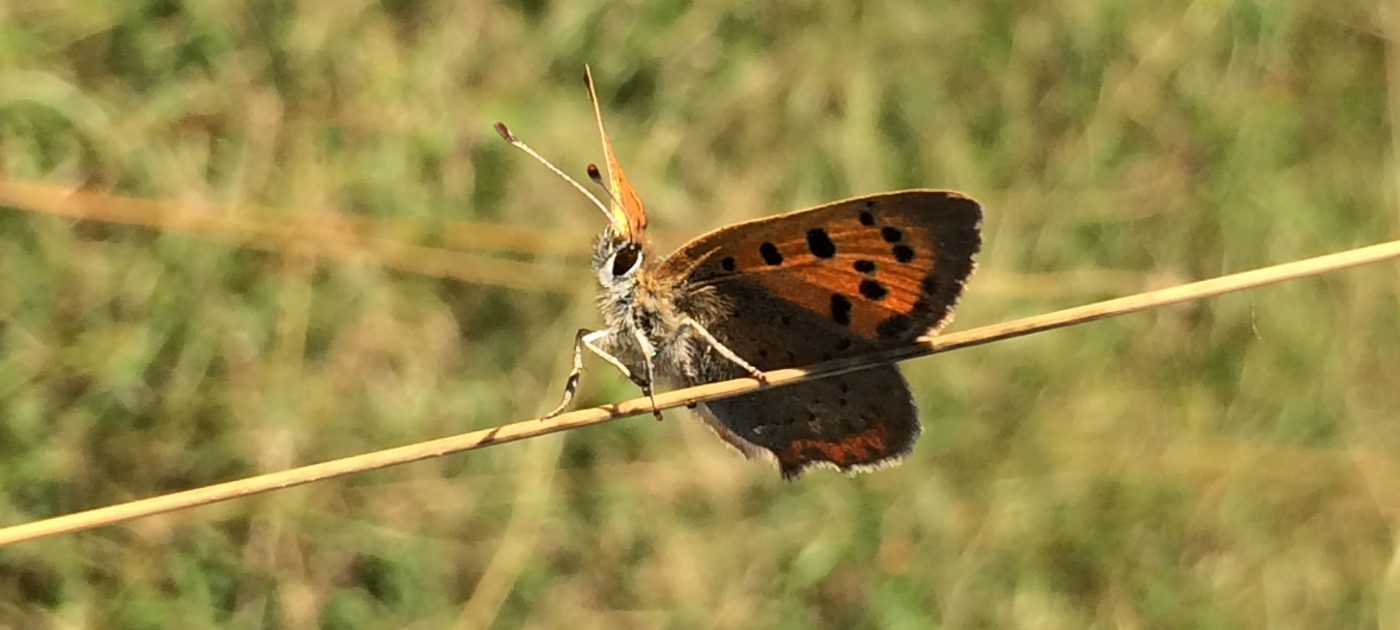Matt Hayes, Research Assistant writes:

Whilst everyone is being asked to stay at home it’s important that we continue to look outside and engage with the natural world. To help with this, we are going to be blogging about wildlife you can see from your window or in your garden.
This set of posts will look at different groups of common butterflies as well as some historical species that have been lost or suffered declines. Read to the end for tips on how to support butterflies where you live.
Family Lycaenidae
Small copper, Lycaena phlaeas

Although widespread across nearly all of the UK and Ireland, you are less likely to see this species in your garden than most of the other butterflies we have mentioned. That being said, if you live close to an area of dry, dusty grassland then this species can be seen in gardens, so keep your eyes peeled for this beautiful bright orange butterfly.
The species can have as many as three, or possibly even four, generations each year, with emergence times pushed back by roughly a month in Scotland. Down south, the first brood emerges in around May, with a second in July and August and a third in September and October. Small coppers usually lay their eggs on common sorrel and sheep’s sorrel, on which their larvae feed.

The small copper won’t be seen on our #OpenYourWindowBingo sheet, but if you see one add it to your own and give it a high score!
Click the image to find out more…
Species of the Past
Large copper, Lycaena dispar


Now imagine you were looking out at your garden 200 years ago, when the small copper’s relative, the large copper, would also have been flying around. The males of this species were more uniformly orange on their upper wings, whereas females had a thicker black border and black spots towards their margins. Unlike the dusty dry habitats of the small copper, the large copper was a wetland specialist. This species used to be found throughout the fenlands of South East England.

However, it is estimated that in the U.K. 99% of this habitat was drained to make space for agriculture and, as a result, the large copper went extinct in the UK over 150 years ago. Reintroductions have been attempted using subspecies from the continent but have so far failed.
However, large scale restoration projects in Cambridgeshire, such as the Bedfordshire, Cambridgeshire and Northamptonshire (BCN) Wildlife Trust’s Great Fen Project and the National Trust’s Wicken Vision Project, are working to bring wetland habitat back and may allow this wetland specialist to survive here again in the future.
The species would have been seen on the wing in July and August, laying eggs on water dock, a wetland plant.
Gardening for coppers

Larval foodplants:
To support the small copper and entice egg laying females into your garden, try planting common sorrel and sheep’s sorrel amongst your flowerbeds.
For more detailed information on gardening for butterflies and wildlife in general please see:
Butterfly Conservation (website)
The Wildlife Trust for Bedfordshire, Cambridgeshire and Northamptonshire (website)
For more detailed information on the butterflies of the British Isles please see:
Butterfly Conservation (website)
The Butterflies of Britain and Ireland (Book):
Lewington, R & Thomas, J (2014). The Butterflies of Britain & Ireland. New Revised Edition. Oxford: British Wildlife Publishing Ltd.

The Esmée Fairbairn Collections Fund is run by the Museums Association, funding projects that develop collections to achieve social impact.


One thought on “Copper butterflies”